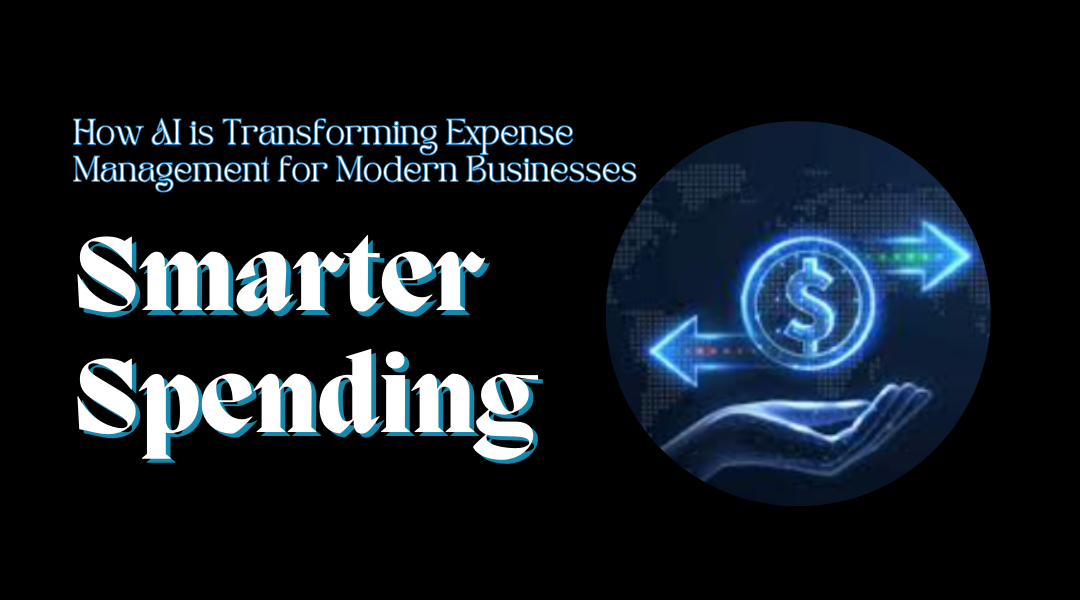Introduction: The Problem with Old-School Expense Tracking
Let’s be honest—Managing expenses manually is a headache. Between deciphering crumpled receipts, chasing employees for reimbursement forms, and manually categorizing every transaction, the process is slow, error-prone, and frustrating. For businesses, inefficiencies in expense management don’t just waste time—they lead to overspending, compliance risks, and missed financial insights.
But what if there was a better way?
Today, AI-powered tools are revolutionizing how companies handle expenses, turning a tedious back-office task into a seamless, intelligent process. By automating data entry, flagging policy violations in real time, and providing instant spending insights, these systems are helping businesses save money, reduce fraud, and make smarter financial decisions.
Here’s how it works in practice.
1. No More Manual Receipt Entry—AI Does the Heavy Lifting
We’ve all been there: stuffing receipts into envelopes or snapping blurry photos at the end of a business trip, only to spend hours manually logging expenses later. AI eliminates this grind.
How it works:
- Employees simply take a photo of a receipt using their phone.
- AI scans the text (even handwritten scribbles) and pulls key details—vendor, date, amount, and category—instantly logging it in the system.
Real-world example:
A sales rep grabs lunch with a client, snaps a pic of the receipt, and by the time they’re back at their desk, the expense is already categorized under “Client Entertainment.” No paperwork, no delays.
Why it matters:
- Saves time: Finance teams no longer waste hours decoding receipts.
- Reduces errors: No more typos from manual entry.
- Improves compliance: Every expense is captured, reducing “lost receipt” excuses.
2. Expenses Automatically Sorted—No More Guesswork
Manually tagging expenses is tedious. Was that Uber ride “Travel” or “Transportation”? Did office snacks count as “Supplies” or “Employee Benefits”? AI removes the guesswork.
How it works:
- AI analyzes past spending patterns, vendor names, and even location data to auto-categorize transactions accurately.
Real-world example:
A marketing team runs a campaign with expenses spanning ads, printing, and a team dinner. AI sorts them into “Advertising,” “Print Materials,” and “Team Meals” without human intervention.
Why it matters:
- Clearer spending insights: Finance gets real-time visibility into where money is going.
- Simpler audits: Clean, organized records make tax time less painful.
3. Real-Time Alerts—Stop Overspending Before It Happens
Budget blowouts often aren’t caught until it’s too late. AI changes that by monitoring spending as it happens.
How it works:
- The system compares expenses against budgets and company policies, flagging anomalies instantly.
Real-world example:
An employee books a luxury hotel for a conference, exceeding the company’s $200/night limit. AI immediately alerts the finance team, who can address it before reimbursement.
Why it matters:
- Prevents budget surprises: No more end-of-quarter shocks.
- Enforces policy fairly: No exceptions slip through unnoticed.
4. No More Juggling Between Systems—AI Syncs Everything
Switching between spreadsheets, accounting software, and bank feeds is a recipe for errors. AI bridges the gap.
How it works:
- Integrates directly with tools like QuickBooks, NetSuite, or Xero, auto-syncing expenses without manual exports.
Real-world example:
A startup’s finance team used to spend Fridays reconciling receipts with their accounting system. Now, AI matches transactions daily, cutting reconciliation time by 80%.
Why it matters:
- Fewer mistakes: No duplicate entries or missed transactions.
- Faster reporting: Real-time data means quicker decisions.
Where AI Expense Tools Shine in the Real World
- Travel & reimbursements: Cuts processing time from weeks to days.
- Subscription waste: Flags unused SaaS tools draining budgets.
- Fraud detection: Spots duplicate receipts or suspicious claims.
- Vendor invoices: Automates bill payments, avoiding late fees.
The Bottom Line: Smarter Spending, Less Hassle
AI isn’t just automating expense management—it’s transforming how businesses control costs. By removing manual work, catching errors early, and delivering instant insights, these tools help companies spend wisely, stay compliant, and focus on growth.
For finance teams drowning in spreadsheets or executives tired of budget surprises, AI-powered expense management isn’t just convenient—it’s a game-changer.
The question isn’t whether your business can afford to adopt it—it’s whether you can afford not to.
